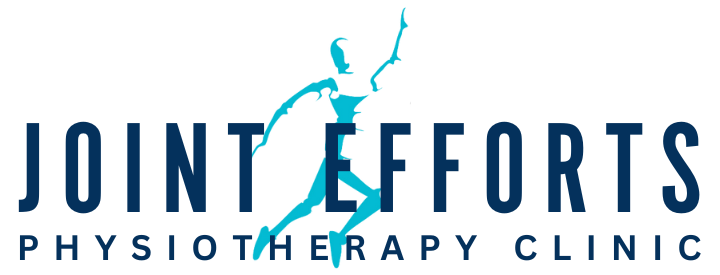Chronic pain is an issue that affects millions of people globally. Whether it’s from an injury, surgery, or a medical condition, the question often arises: should you rely on painkillers for temporary relief or seek physiotherapy for a longer-term solution? Painkillers are commonly prescribed to provide immediate relief, but they often only mask the symptoms of pain. In contrast, physiotherapy works to address the root causes and helps prevent future issues, offering a solution to painkillers that focuses on sustainable recovery. In this article, we will explore why physiotherapy offers a more comprehensive, sustainable, and long-term solution compared to painkillers.
What is Physiotherapy and How Does It Work?
Physiotherapy is a specialized branch of healthcare that focuses on the treatment and management of pain through physical methods rather than medication. Physiotherapists work with patients to improve their physical function, increase mobility, and reduce pain using exercises, manual therapy, and other therapeutic interventions. This approach allows physiotherapists to not only treat the symptoms but also help address the underlying causes of pain.
For example, individuals suffering from chronic back pain can benefit from physiotherapy techniques designed to improve posture, strengthen muscles, and correct spinal misalignments. Similarly, those undergoing knee pain physiotherapy can benefit from targeted exercises that improve joint stability and range of motion. In contrast, painkillers only mask the pain, offering temporary relief without improving function or addressing the source of the pain. Physiotherapy serves as a solution to painkillers, providing a holistic approach that targets the root causes of pain and promotes long-term recovery.
How Physiotherapy Addresses Different Types of Pain
Physiotherapy can be an effective solution to painkillers for a variety of pain-related issues, including musculoskeletal pain, joint pain, nerve pain, and post-surgical rehabilitation. Some common conditions treated with physiotherapy include:
- Back Pain Treatment: Chronic back pain can be debilitating and affect daily life. Physiotherapists work with patients to improve posture, strengthen core muscles, and improve spinal alignment. Best physiotherapy for back pain involves individualized exercises and hands-on therapy that target the root causes of discomfort.
- Joint Pain Physiotherapy: Whether it’s knee pain, hip pain, or shoulder pain, physiotherapy helps improve joint flexibility, reduce stiffness, and strengthen the muscles around the joint.
- Knee pain physiotherapy: can be particularly effective for those recovering from knee injuries or surgeries, such as home physiotherapy for knee replacement.
- Sciatica Treatment Physiotherapy: For individuals suffering from sciatica, physiotherapy helps alleviate nerve compression and improve mobility. By targeting the sciatic nerve and surrounding muscles, physiotherapists can help reduce pain and prevent future flare-ups.
- Sports Injury Physiotherapy: Athletes often suffer from injuries such as sprains, strains, and tendonitis. Sports injury physiotherapy focuses on rehabilitation, helping athletes recover and return to their activities safely and effectively.
- Post-Surgery Physiotherapy: After surgery, patients often need assistance in regaining movement and strength. Post-surgery physiotherapy at home is particularly beneficial, as it provides a convenient option for patients to receive treatment in their own environment while focusing on rehabilitation.
- Physiotherapy for Seniors: As people age, they experience a decline in strength, flexibility, and mobility. Physiotherapy for seniors at home can help elderly individuals maintain independence, improve balance, and prevent falls. Physiotherapy for elderly at home is especially helpful for those with mobility challenges or other age-related issues.
Five reasons to why physiotherapy lasts:-
1. Immediate Relief vs. Lasting Recovery: The Solution to Painkillers
The Painkiller Approach:
- When pain strikes, most people instinctively reach for medications that deliver quick comfort.
- Painkillers work by interrupting pain signals to the brain, providing rapid relief during acute discomfort.
- This pharmaceutical approach focuses on symptoms rather than addressing underlying causes.
- While pain sensations are temporarily dulled, the root problems—like weakened muscles, poor posture, or tissue damage—remain untreated.
The Medication Cycle:
- This symptom-focused approach creates a problematic pattern where the actual cause persists or worsens.
- Patients often develop increasing reliance on medication over time.
- Extended painkiller use brings serious health concerns including potential dependency, digestive issues, liver and kidney damage, and various unwanted side effects.
The Physiotherapy Difference:
- Physiotherapy employs a fundamentally different philosophy centered on identifying and treating pain’s source.
- Rather than masking symptoms, treatments for conditions like cervical pain or frozen shoulder use targeted exercises, manual techniques, and movement therapies.
Comprehensive Healing Through Physiotherapy:
- Physiotherapists address muscle imbalances, improve joint mobility, enhance tissue flexibility, and retrain movement patterns.
- Patients receive education about body mechanics and self-management strategies.
- This approach naturally relieves pain while restoring proper function and building resilience against future problems.
- Though requiring more time and active participation than medication, physiotherapy delivers sustainable improvements that pills alone cannot provide.
While pain medications can offer relief, they come with several limitations that warrant careful consideration:
- Dependency Risk and Tolerance Development: With continued use, particularly of opioid medications, the body adapts by requiring increasingly larger doses to achieve the same pain-relieving effect. This physiological adaptation can lead to dependency issues and challenging withdrawal symptoms when attempting to discontinue use.
- Digestive System Complications: NSAIDs such as ibuprofen and naproxen frequently cause gastric irritation that can progress to more serious conditions including stomach ulcers, intestinal bleeding, and chronic digestive disturbances with extended use.
- Organ Stress and Damage: Regular consumption of pain medications places considerable strain on vital filtering organs. Acetaminophen in high doses or with long-term use can cause liver toxicity, while NSAIDs may compromise kidney function, particularly in those with existing renal vulnerabilities.
- Quality-of-Life Side Effects: Even when taken as directed, many pain medications produce side effects including cognitive fog, balance issues, drowsiness, nausea, and constipation—all of which can significantly impact daily functioning and overall quality of life.
- Diagnostic Obstruction: Perhaps most concerning is how pain medication can obscure important diagnostic signals, potentially allowing serious conditions to progress undetected while symptoms remain artificially suppressed.
Given these substantial drawbacks, physiotherapy emerges as a solution to painkillers, addressing the fundamental causes of discomfort rather than merely concealing symptoms.By focusing on the root causes of pain and promoting natural healing, physiotherapy offers a sustainable and effective solution to painkillers. Embracing physiotherapy as a solution to painkillers empowers patients to take control of their health and achieve long-term relief.Ultimately, choosing physiotherapy provides a holistic and patient-centered solution to painkillers, leading to improved quality of life.
2.The Importance of Physiotherapy in Post-Surgery Recovery
For individuals who have undergone surgery, whether it’s a knee replacement, joint surgery, or spinal surgery, physiotherapy is crucial for recovery. Post-surgery rehabilitation through physiotherapy can help patients regain mobility, improve strength, and reduce stiffness in the affected area. The key benefit of physiotherapy after surgery is that it promotes healing by focusing on functional recovery.For example, home physiotherapy for knee replacement plays a significant role in regaining knee function. After the procedure, physiotherapists guide patients through exercises that improve range of motion, strengthen muscles, and prevent scar tissue formation. This ensures that patients can return to normal activities faster and with less pain.
Moreover, physiotherapy serves as a solution to painkillers by offering non-pharmacological methods to manage post-operative pain. Techniques such as manual therapy, electrotherapy, and targeted exercises can alleviate discomfort, reducing the reliance on medications and minimizing potential side effects. This approach not only enhances recovery but also promotes long-term well-being by addressing pain through natural and effective means.
3. Long-Term Benefits of Physiotherapy
The long-term benefits of physiotherapy cannot be overstated. While painkillers may provide temporary relief, physiotherapy serves as a solution to painkillers by addressing the root causes of pain, promoting healing, and helping prevent future problems. It equips patients with the tools they need to manage pain independently through exercises, lifestyle changes, and education.
A physiotherapist collaborates closely with each patient to develop a personalized plan that not only alleviates pain but also enhances strength, flexibility, and overall function. For instance, joint pain physiotherapy and physiotherapy for cervical pain focus on restoring movement and preventing future injuries. Similarly, sports injury physiotherapy aids athletes in recovering safely and effectively, enabling them to return to their activities without fear of re-injury.
By choosing physiotherapy as a solution to painkillers, patients can achieve sustainable pain management without the risks associated with long-term medication use.
4. Home Physiotherapy: A Convenient and Personalized Approach
One of the most appealing aspects of physiotherapy is the ability to receive treatment at home. Home physiotherapy offers a solution to painkillers by providing non-invasive, drug-free care that addresses the root causes of pain. This approach is especially beneficial for individuals with mobility issues, busy schedules, or elderly patients who may find traveling to a clinic challenging.
For stroke patients, home physiotherapy is invaluable. It allows for consistent rehabilitation in a comfortable environment, aiding in the recovery of motor skills, balance, and overall function. This personalized care at home ensures that therapy is seamlessly integrated into daily routines, promoting better outcomes.
New mothers can also benefit from postnatal physiotherapy at home, addressing common postpartum issues such as pelvic floor dysfunction, postural imbalances, and back pain. Receiving care at home eliminates the need to travel, which can be particularly advantageous when caring for a newborn.
Additionally, offering the option of a female physiotherapist for home visits ensures that patients who prefer or require this can receive care in a comfortable and supportive environment. This personalized approach underscores physiotherapy’s role as a solution to painkillers, focusing on holistic, patient-centered care without the reliance on medication.
5. Affordable and Accessible Physiotherapy
Cost is often a concern when considering physiotherapy. While traditional physiotherapy clinics can be expensive, there are more affordable options, including affordable physiotherapy clinic services and home physiotherapy services. Many physiotherapists offer payment plans or accept insurance, making treatment more accessible. At-home physiotherapy services can be more cost-effective than visiting a clinic repeatedly. For example, physiotherapy for seniors at home may be more affordable than regular clinic visits, especially for elderly patients who may require ongoing treatment. Additionally, the convenience of home treatment eliminates transportation costs.
While painkillers might seem like a quick fix for pain relief, they often come with side effects and don’t address the root cause of the pain. In contrast, physiotherapy offers a holistic approach, aiming to treat the underlying issues and provide long-term relief solution to painkillers.
Conclusion: Why Physiotherapy is the Preferred Long-Term Solution
In conclusion, when it comes to managing chronic pain, physiotherapy offers a more sustainable, long-term solution to painkillers. By addressing the root cause of the pain and promoting functional recovery, physiotherapy helps individuals not only feel better but also live better. Whether it’s through home physiotherapy for knee replacement, sciatica treatment physiotherapy, or post-surgery physiotherapy at home, physiotherapy offers a tailored, personalized approach that improves overall health.
While painkillers may be a quick fix, physiotherapy empowers patients to take control of their health, improve their quality of life, and prevent future injuries. Choosing physiotherapy services as a long-term solution ensures that patients can live a pain-free life with improved mobility, strength, and independence.
Don’t ignore your body’s warning signals. Reach out to a qualified physiotherapy provider like Joint Efforts, who can deliver expert care either at their clinic or through home physiotherapy services. Your journey to recovery begins with recognizing when professional intervention is necessary—and acting promptly to address these red flags.


